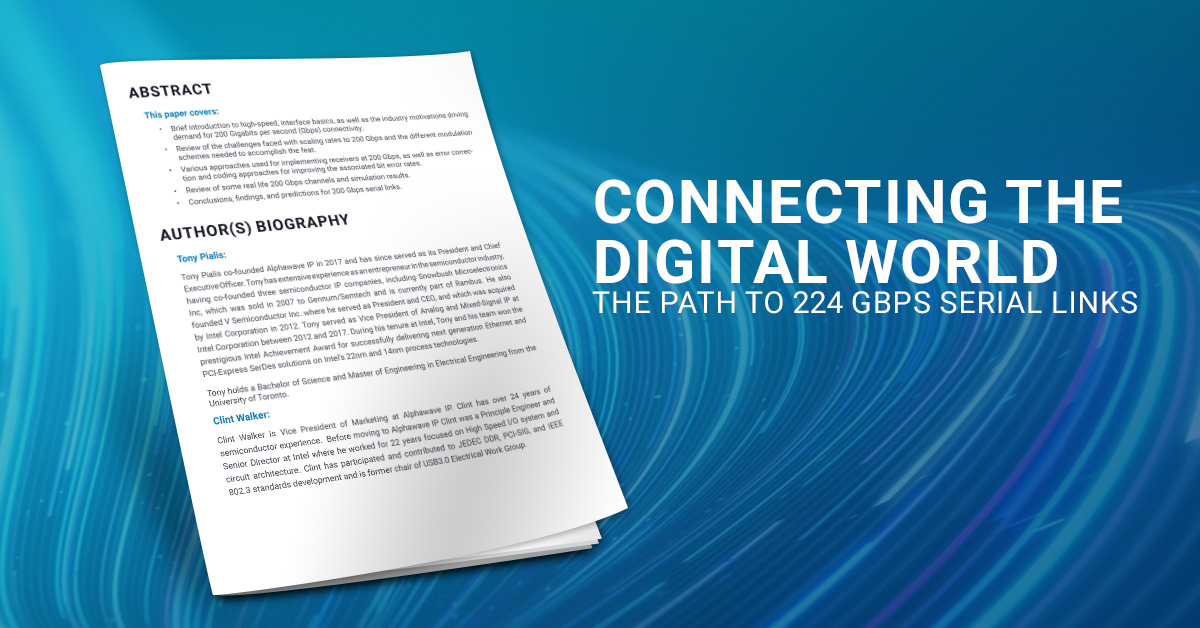This paper covers:
- Brief introduction to high-speed, interface basics, as well as the industry motivations driving demand for 200 Gigabits per second (Gbps) connectivity.
- Review of the challenges faced with scaling rates to 200 Gbps and the different modulation schemes needed to accomplish the feat.
- Various approaches used for implementing receivers at 200 Gbps, as well as error correction and coding approaches for improving the associated bit error rates.
- Review of some real life 200 Gbps channels and simulation results.
- Conclusions, findings, and predictions for 200 Gbps serial links.
Author(s) Biography
Tony Pialis:
- Tony Pialis co-founded Alphawave Semi in 2017 and has since served as its President and Chief Executive Officer. Tony has extensive experience as an entrepreneur in the semiconductor industry, having co-founded three semiconductor IP companies, including Snowbush Microelectronics Inc, which was sold in 2007 to Gennum/Semtech and is currently part of Rambus. He also founded V Semiconductor Inc. where he served as President and CEO, and which was acquired by Intel Corporation in 2012. Tony served as Vice President of Analog and Mixed-Signal IP at Intel Corporation between 2012 and 2017. During his tenure at Intel, Tony and his team won the prestigious Intel Achievement Award for successfully delivering next generation Ethernet and PCI-Express SerDes solutions on Intel’s 22nm and 14nm process technologies.
- Tony holds a Bachelor of Science and Master of Engineering in Electrical Engineering from the University of Toronto.
Clint Walker:
- Clint Walker is Vice President of Marketing at Alphawave Semi. Clint has over 24 years of semiconductor experience. Before moving to Alphawave Semi Clint was a Principle Engineer and Senior Director at Intel where he worked for 22 years focused on High Speed I/O system and circuit architecture. Clint has participated and contributed to JEDEC DDR, PCI-SIG, and IEEE 802.3 standards development and is former chair of USB3.0 Electrical Work Group.


